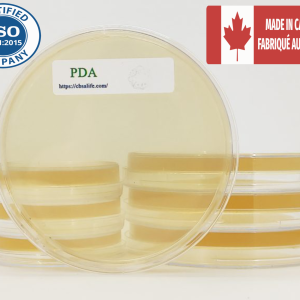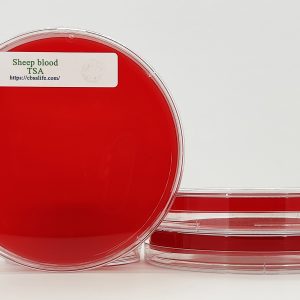
Mueller Hinton II Broth is intended for use in quantitative procedures for susceptibility testing of rapidly-growing aerobic and facultatively anaerobic bacteria isolated from clinical specimens.
INTENDED USE
Mueller Hinton II Broth is intended for use in quantitative procedures for susceptibility testing of rapidly-growing aerobic and facultatively anaerobic bacteria isolated from clinical specimens. It is formulated to have a low thymine and thymidine content and is adjusted to the calcium and magnesium ion concentrations recommended in CLSI standard M7.
SUMMARY AND EXPLANATION
The development of laboratory tests to determine the activity of antimicrobial agents has paralleled the development of these agents. In 1929, Fleming used a serial dilution technique to measure the lowest concentration of penicillin that prevented growth of a test organism in broth. Ericsson and Sherris published an excellent review of the various methods for susceptibility testing and the relationship of dilution and diffusion methods.
Rammelkamp and Maxon were among the earliest to use the tube dilution test to determine the in vitro antimicrobial susceptibility of bacteria isolated from clinical specimens. The development of this test resulted from the need to know why some patients infected with S. aureus did not respond to penicillin therapy.
The tube dilution test (broth dilution) involves exposing bacteria to decreasing concentrations of antimicrobial agents in liquid media, usually by serial two-fold dilution. The mixture, consisting of microorganisms, nutrient medium and antimicrobial agent, is incubated at 35°C for 16-20 hours. The lowest concentration of antimicrobial agent at which no visible growth occurs is defined as the minimal inhibitory concentration (MIC).
The term “microdilution” appeared in the literature in 1970 to describe the minimal inhibitory concentration tests performed with volumes of 0.1 mL or less of antimicrobial solution. Correlations between MIC values using microdilution and tube dilution methodologies have been reported to be between 85 and 96%.
The qualitative disc diffusion antimicrobial susceptibility procedure has been standardized since 1966. The rationale for an MIC susceptibility test rather than the disc diffusion test is that it gives quantitative information. It provides a relationship between the amount of antimicrobial agent required to inhibit the growth of an organism in vitro and the achievable concentrations in the blood, urine, cerebrospinal fluid or bile, under various dosage conditions. It has been suggested that in the treatment of systemic infections, the drug dosage should yield a peak concentration at the site of infection that is two to four times greater than the MIC value, while for urinary tract infections, a peak urine concentration of 10-20 times the MIC value should be achieved. However, effective antimicrobial therapy also depends on many other factors.
PRINCIPLE
Acid hydrolysate of casein and beef extract provide nutrients for growth of test organisms. These ingredients are selected for low thymine and thymidine content as determined by MIC values with Enterococcus faecalis and sulfamethoxazoletrimethoprim (SXT). Calcium and magnesium ion concentrations are adjusted to provide the amounts recommended by CLSI to give the correct MIC values with aminoglycosides and P. aeruginosa. The pH has been adjusted to the specification in CLSI standard M7.
MRSA cultures often consist of two populations, one that is susceptible and one that is resistant (so-called “occult resistant” strains). The methicillin-resistant population grows more slowly and prefers a high salt concentration as contained in Mueller Hinton II Broth with 2% NaCl. In addition, the lower pH of this medium (6.9) improves the stability of β-lactam antibiotics during storage of prepared MIC test tubes or trays.
Antimicrobial agents are prepared in serial two-fold dilutions in Mueller Hinton II Broth and are inoculated with the test culture to give a final concentration of 5 × 105 CFU/mL. Following incubation at 35°C, the presence of turbidity indicates growth of the organism. The lowest concentration of antimicrobial agent showing no growth is the MIC of that organism for that agent. The interpretation as to whether the organism is susceptible, intermediate, or resistant in its response to the agent is made by comparing the MIC to those in the MIC interpretive standards in CLSI standard M7.
Various factors have been identified as influencing broth dilution susceptibility tests. These include the medium, antimicrobial potency, inoculum concentration, pH, antimicrobial stability and mechanisms of resistance by the test organisms.
| Container | 7ml Tube, 5ml Tube, 10ml Tube, 30ml Tube, 50ml Tube, 100ml, 250ml |
|---|---|
| Package | 1, 5, 10, 20 |
Only logged in customers who have purchased this product may leave a review.





Reviews
There are no reviews yet.